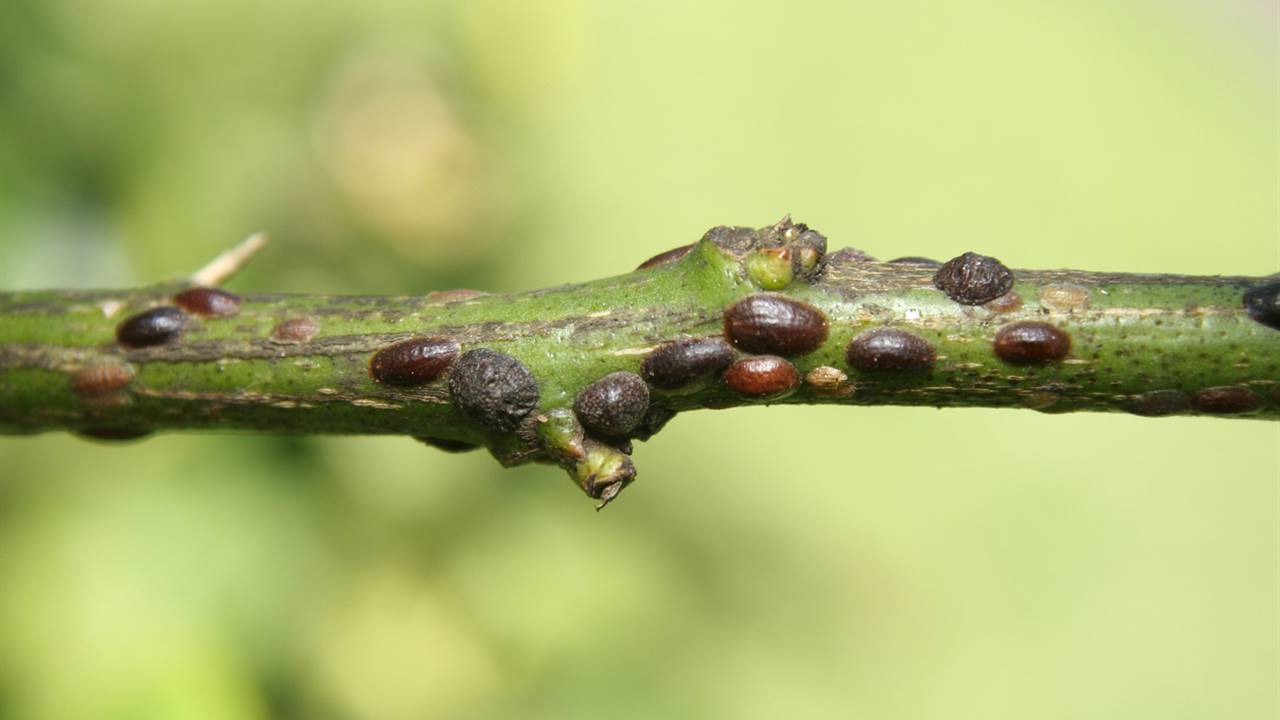
Scales and/or Caparretas
Mealybugs
Pathogen:
Insect
Type:
Risk:
HIGH
Cochinillas
Plantas decorativas de jardín y/o interior


WHO CAUSES IT?
Mealybugs are small, sucking insects that belong to different species within the Pseudococcidae family. They are known for their ability to infest a wide variety of plants, from ornamentals to agricultural crops. Its life cycle includes several stages: egg, nymph and adult. Females lay their eggs in cottony masses that they protect with their waxy body. Nymphs, also known as "crawlers," disperse and look for suitable places to feed. As they grow, they shed their exoskeleton several times before becoming adults. Adult females are generally immobile, while males, which are less common, have wings and seek out females to mate with. Mealybugs feed on plant sap by piercing the tissues and sucking the fluids, which can considerably weaken the plant.
SYMPTOMS
Mealybug infestation in cacti produces a series of symptoms that affect the overall health of the plant. Among the most obvious are the appearance of white cottony masses on the surface of the plant, especially in the folds and protected areas. These insects also secrete a sticky substance known as honeydew, which can promote the growth of fungi such as sooty mold. Mealybugs can cause yellowing and wilting of leaves, general weakening of the plant, and in severe cases, plant death.
- Appearance of white cottony masses.
- Secretion of sticky molasses.
- Growth of fungi such as sooty mold.
- Yellowing of the leaves.
- Withering of the leaves.
- General weakening of the plant.
- Death of the plant in severe cases.

TEMPERATURE AND HUMIDITY
20°C a 30°C
60% a 80%
TRANSMISSION ROUTES
Direct contact between plants, Wind, Contaminated tools, Insect vectors, Transport of infested plants, Contaminated soil
Do you want to remove this pest? Choose how you want to treat it.
TREATMENTS
Chemical treatments
• ABAMECTIN 0.0015% + PYRETHRINS 0.02% [AL] P/V
• RAPESEAL OIL 0.825% + PYRETHRINS 0.018% [AL] P/V
• RAPE OIL 1.53% [AL] P/V
• RAPE OIL 1.69% ( ) [AL] P/V
• RAPE OIL 77.7% [EC] P/V
• RAPE OIL 848.24 g/l [EC] P/V
• ORANGE OIL 60g/L [ME] P/S
• PARAFFIN OIL (CAS [97862-82-3]) 40% [EW] P/V
• PARAFFIN OIL (CAS [97862-82-3]) 80% [EC] P/V
• ACETAMIPRID 0.005% [AL] P/V
• ACETAMIPRID 20% [SG] P/P
• ACETAMIPRID 20% [SP] P/P
• AZADIRACTIN 1% (AS AZADIRACTIN A) [EC] P/V
• Azadirachtin 2.6% (AS AZADIRACTIN A) [EC] P/V
• CYPERMETHRIN 5% [EC] P/V
• CYPERMETHRIN 50% [EC] P/V
• DELTAMETHRIN 1.57% [SC] P/V
• DELTAMETHRIN 2.5% [EC] P/V
• FLUPIRADIFURONE 0.008% [AL] P/V
• LAMBDA CYHALOTHRIN 5% [EG] P/P
• PYRIPROXIFEN 10% [EC] P/V
• POTASSIUM SALTS OF UNSATURATED FATTY ACIDS C7-C18 & C18 (CAS [67701-09-1] 515g/L [SL] P/V
• POTASSIUM SALTS OF UNSATURATED FATTY ACIDS C7-C18 & C18 10.2g/L [AL] P/V
• POTASSIUM SALTS OF FATTY ACIDS C14-C20 48% [EW] P/V
• POTASSIUM SALTS OF VEGETABLE FATTY ACIDS 13.04% [SL] P/V
• SPIROMESIFEN 24% [SC] P/V
• TAU-FLUVALINATE 24% [EW] P/V
Authorized treatments in organic farming
• RAPESEAL OIL 0.825% + PYRETHRINS 0.018% [AL] P/V
• RAPE OIL 1.53% [AL] P/V
• RAPE OIL 1.69% ( ) [AL] P/V
• RAPE OIL 77.7% [EC] P/V
• RAPE OIL 848.24 g/l [EC] P/V
• ORANGE OIL 60g/L [ME] P/S
• PARAFFIN OIL (CAS [97862-82-3]) 40% [EW] P/V
• PARAFFIN OIL (CAS [97862-82-3]) 80% [EC] P/V
• AZADIRACTIN 1% (AS AZADIRACTIN A) [EC] P/V
• Azadirachtin 2.6% (AS AZADIRACTIN A) [EC] P/V
• LAMBDA CYHALOTHRIN 5% [EG] P/P
• POTASSIUM SALTS OF UNSATURATED FATTY ACIDS C7-C18 & C18 (CAS [67701-09-1] 515g/L [SL] P/V
• POTASSIUM SALTS OF UNSATURATED FATTY ACIDS C7-C18 & C18 10.2g/L [AL] P/V
• POTASSIUM SALTS OF FATTY ACIDS C14-C20 48% [EW] P/V
• POTASSIUM SALTS OF VEGETABLE FATTY ACIDS 13.04% [SL] P/V
Biological control
• CRYPTOLAEMUS MONTROUZIERI
Recommendations
- Maintain good hygiene in the growing area, eliminating plant debris and organic materials that could serve as a refuge for mealybugs.
- Regularly inspect plants for early signs of infestation and act immediately.
- Use specific insecticides for mealybugs, applying them according to the manufacturer's instructions and alternating products to avoid resistance.
- Implement biological controls, such as the introduction of natural predators of mealybugs, such as ladybugs and parasitic wasps.
- Avoid excess nitrogen fertilization, as it can make plants more susceptible to infestations.
- Prune and destroy severely infested plant parts to reduce the scale insect population.
- Improve ventilation and space between plants to reduce humidity and hinder the spread of mealybugs.
Sponsored link
Sponsored link
Sponsored link
Sponsored link
Sponsored link
Sponsored link
Effective against all types of fungi
TREATMENTS
Homemade remedies
There are no home treatments
Natural allies
Chemical treatments
There are no treatments for this disease. Treatments are directed at the insect vectors that transmit it. See insect treatments.
RECOMMENDATIONS
- Check the back of the leaves frequently, especially in dry weather.
- Spray water on the leaves to increase humidity and prevent them from settling.
- Keep plants healthy with good watering and adequate light.
- If you see cobwebs or damage, clean the leaves with a damp cloth or pressurized water.
- Use potassium soap or neem oil every few days until they disappear.
REPELLENT PLANTS
Rosemary, Dill, Coriander
EFFECTIVE PRODUCTS TO ELIMINATE THIS PEST
Sponsored link
Sponsored link
Sponsored link
Sponsored link
Sponsored link
Sponsored link
Effective against all types of fungi
*Recommended treatments are still recommendations according to authority databases and in no way replace the guidelines established according to the legislation of each country.
*Products shown are recommendations and not our own products. As Amazon Associates, we earn revenue from purchases of recommended products.






















